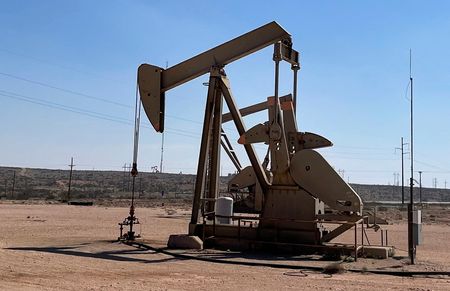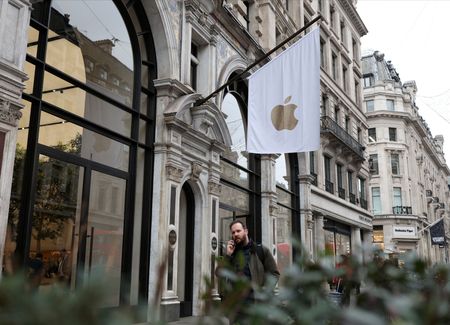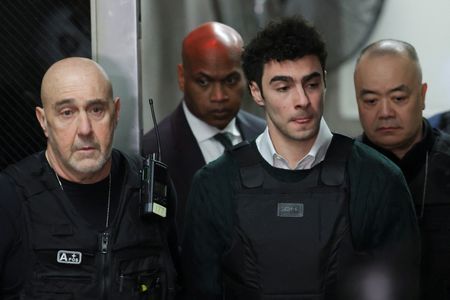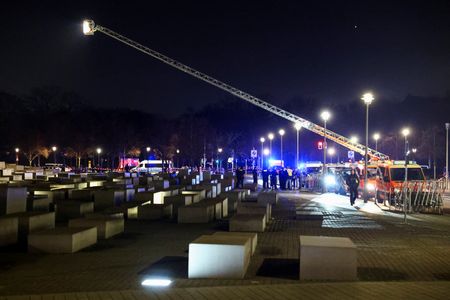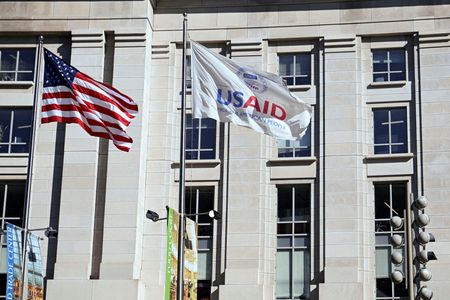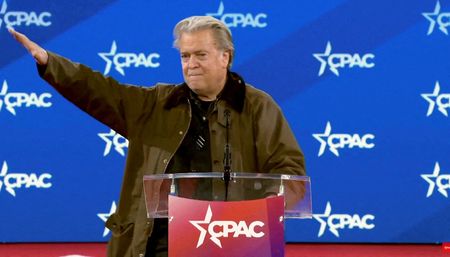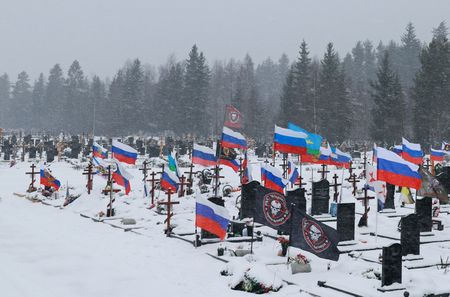By Libby George and Marc Jones
LONDON (Reuters) -Ukrainian bond prices have dropped sharply this week as increasingly hostile rhetoric from U.S. President Donald Trump toward the country and its leader Volodymyr Zelenskiy forces many investors to reconsider what may now lie ahead.
The war-torn country’s debt instruments underwent their biggest price falls in months after Trump followed up his shock move to speak directly to Russian President Vladimir Putin last week by calling Zelenskiy a “dictator”.
They have yet to lose all of the gains made since Trump was elected in November on promises of a quick ceasefire, however.
For politicians and investors alike Trump’s latest comments have raised doubts about the kind of peace deal Kyiv could be asked to swallow and how different it will be from the post-Crimea Minsk agreements that failed to prevent 2022’s follow-up Russian invasion.
“Trump is not indicating in any form that the resolution will be a good one in any way for Ukraine,” said Daniel Moreno, head of emerging market debt at investment firm Mirabaud, that does not currently hold Ukrainian debt. “The future of Ukraine looks a lot more murky than it did a few weeks ago.”
A key worry for Moreno and many other potential creditors is that a flimsy peace deal without the necessary security reassurances would make international institutions and private investors less likely to pour money into rebuilding Ukraine.
Analysts at JPMorgan estimated the reconstruction needs are at a minimum $35 billion a year over the next 10 years, although it could be up to $50 billion given Russia’s intense bombardments of energy infrastructure over the last year.
Ukraine’s GDP warrant – which pays out more if the economy grows strongly – is on track for a more than 3 cent weekly loss, its biggest since October 2023. The 2035 bonds it restructured just last year are set to drop roughly 5 cents, the biggest fall since their relaunch.
But neither have come close to giving up the gains from the earlier Trump-induced rally: the warrant is more than 40 cents above October levels, while its 2035 bond is just over 14 cents above where it traded in October.
Over the last year, they have returned investors a staggering 70% – bettered only by two other highly idiosyncratic cases, Lebanon at 234% and Argentina at 84%.
DEAL OR NO DEAL
Viktor Szabo, a portfolio manager with abrdn, which is invested in Ukraine, acknowledged that Trump’s actions over the last week have increased the risks.
“It raises the odds that Ukraine will not accept whatever deal Trump and Putin come up with,” he said.
Kaan Nazli, a portfolio manager with Neuberger Berman, cautioned that trading had been thin, making bond prices more reactive to negative headlines.
“Ultimately this comes down to what Russia is willing to accept and they have been keeping their cards very close to their chest,” Nazli said, adding that Russia’s “maximalist” demands thus far made it tough for the market to form a clear view without knowing more.
Goldman Sachs said the full payout from GDP outperformance was “only plausible in the event of a near-term and lasting resolution to the war”.
The verbal jousting between Trump and Zelenskiy – and the exclusion of European and Ukrainian leaders from the talks between U.S. and Russian leaders – is feeding doubt over the lasting value of any potential ceasefire agreement.
“I think the path to peace and a beneficial reconstruction has been postponed till further notice, Mirabaud’s Moreno said.
“It is very unclear who, when and why anyone would want to invest in Ukraine right now.”
(Reporting By Libby George and Marc Jones; Editing by Amanda Cooper, Hugh Lawson, Diane Craft, Philippa Fletcher)


